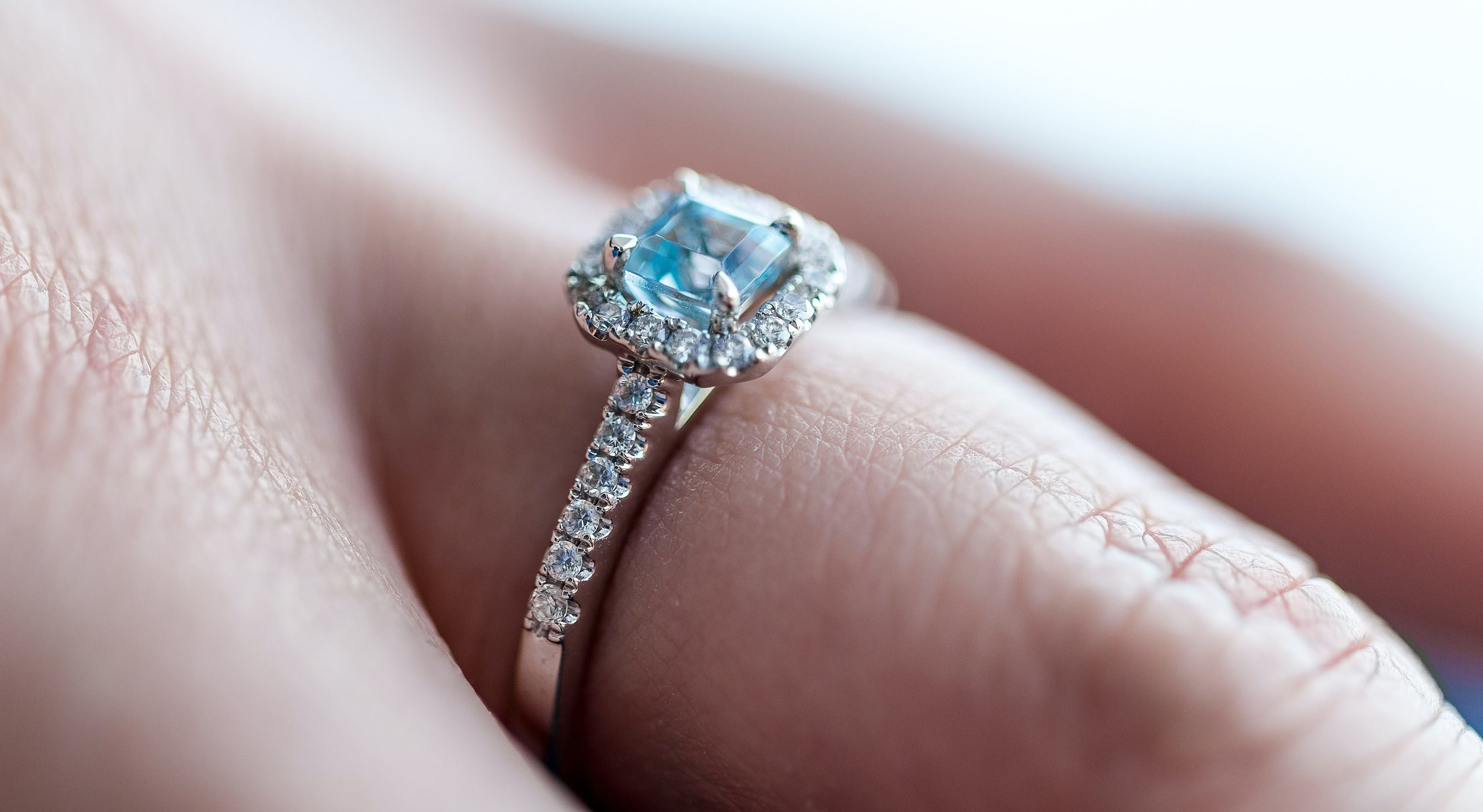
As the saying goes, "Diamonds are forever." These dazzling gemstones have captivated humanity for centuries with their timeless beauty, remarkable hardness, and exquisite brilliance. Diamonds are more than just a symbol of everlasting love and commitment; they also hold a special place in the realm of birthstones, where each month is associated with a unique gemstone. In this article, we will explore the fascinating world of diamonds, which is the April birthstone, and delve into its rich history, symbolism, properties, and more.
What is a Diamond?
Diamonds are natural gemstones that are made up of carbon atoms that have been subjected to intense heat and pressure deep within the Earth's crust for millions of years. The resulting crystalline structure gives diamonds their extraordinary hardness, making them the hardest known substance on Earth. Diamonds are typically colorless, but they can also come in a variety of colors, including yellow, brown, pink, blue, green, and even rare hues such as red and purple, which are known as fancy colored diamonds.
History and Symbolism of Diamonds
Diamonds have a long and illustrious history that spans across cultures and civilizations. The word "diamond" comes from the Greek word "adamas," which means "unbreakable" or "indestructible," reflecting the stone's exceptional durability. Diamonds were first discovered in India over 3,000 years ago and were highly valued for their beauty and rarity. They were believed to possess magical and healing powers, and were used as talismans and amulets to protect against evil spirits and promote strength and courage.
In ancient times, diamonds were also considered a symbol of wealth, power, and prestige, and were often reserved for royalty and the elite. The use of diamonds in jewelry can be traced back to ancient India, where they were used to adorn royal jewelry and religious icons. Diamonds were also highly prized by ancient Greeks and Romans, who believed that diamonds were tears of the gods or splinters from fallen stars.
During the Middle Ages, diamonds gained popularity in Europe as a symbol of eternal love and faithfulness, and were used in engagement rings to represent the unbreakable bond between two people. The tradition of using diamonds in engagement rings can be traced back to the 15th century, when Archduke Maximilian of Austria gave a diamond ring to Mary of Burgundy, marking the beginning of the diamond engagement ring trend that still prevails today.
In modern times, diamonds have become synonymous with luxury, glamour, and everlasting love. They are often used in engagement rings, wedding bands, and other fine jewelry pieces to celebrate special occasions and milestones in life. Diamonds are also associated with qualities such as purity, strength, and resilience, and are often used to represent victory, success, and achievement.
Properties of Diamonds
Diamonds are renowned for their remarkable physical properties, which make them one of the most coveted gemstones in the world. Here are some of the key properties of diamonds:
-
Hardness: Diamonds are the hardest known substance on Earth, with a rating of 10 on the Mohs scale of mineral hardness, which ranges from 1 (the softest) to 10 (the hardest). This exceptional hardness makes diamonds highly resistant to scratching, chipping, and wear, making them ideal for everyday jewelry that can withstand the test of time.
-
Brilliance: Diamonds have a unique ability to refract and reflect light, resulting in their mesmerizing sparkle and fire. The way that light interacts with the facets and internal structure of a diamond gives it its unparalleled brilliance, which is the measure of a diamond's ability to return light to the viewer's eye.
-
Clarity: The clarity of a diamond refers to the presence of any internal or external flaws, known as inclusions and blemishes, respectively. Diamonds with fewer or no inclusions and blemishes are considered to have higher clarity and are more valuable.
-
Color: While most diamonds are colorless, diamonds can also occur in a range of colors due to the presence of trace elements or structural defects during their formation. Fancy colored diamonds, such as pink, blue, and yellow diamonds, are exceptionally rare and valuable.
The Allure of Diamonds as April Birthstone
As the birthstone for April, diamonds hold a special significance for those born in this month. In ancient times, diamonds were believed to have protective and healing properties, making them a popular choice as a birthstone. Diamonds were also associated with the zodiac sign Aries, which falls within the month of April, and were believed to enhance the qualities of courage, strength, and determination associated with this sign.
Diamonds as April birthstone are also thought to bring good fortune and prosperity to those born in this month. It is believed that wearing a diamond can amplify positive energies and promote success, abundance, and love in the wearer's life. Diamonds are also often given as gifts to celebrate milestone birthdays in April, such as a 60th or 75th birthday, as they are considered a symbol of longevity and enduring love.
FAQs about Diamonds
Here are some frequently asked questions about diamonds:
Q: Are all diamonds colorless? A: While most diamonds are colorless, diamonds can also come in a variety of colors, ranging from yellow and brown to pink, blue, green, and even rare hues such as red and purple, known as fancy colored diamonds.
Q: How are diamonds formed? A: Diamonds are formed deep within the Earth's crust under extreme heat and pressure over millions of years. They are then brought to the Earth's surface through volcanic activity.
Q: How are diamonds graded and valued? A: Diamonds are graded and valued based on the "Four Cs": carat weight, cut, color, and clarity. These factors determine a diamond's rarity, beauty, and overall value.
Q: Are lab-grown diamonds real diamonds? A: Yes, lab-grown diamonds are real diamonds with the same chemical and physical properties as natural diamonds. They are grown using advanced technology in a controlled environment and are becoming increasingly popular as an ethical and sustainable alternative to mined diamonds.
Q: How should I care for my diamond jewelry? A: To keep your diamond jewelry looking its best, it is recommended to clean them regularly using mild soap, warm water, and a soft brush. Avoid wearing diamonds during strenuous activities and store them separately to prevent scratching or damage.
Conclusion
In conclusion, diamonds are not only a timeless symbol of love and commitment, but they also hold a special significance as the April birthstone. Their exceptional physical properties, including their hardness, brilliance, clarity, and color, make them highly sought after and valued gemstones. Diamonds are believed to bring good fortune, prosperity, and positive energies to those born in April, making them a meaningful and cherished choice for birthstone jewelry. Whether it's a dazzling diamond engagement ring, a stunning pair of diamond earrings, or a beautiful diamond pendant, incorporating the April birthstone into your jewelry collection is sure to add a touch of elegance and significance to any occasion.
So, why wait? Celebrate your April birthday or surprise your loved one born in April with a dazzling diamond piece of jewelry that will truly stand the test of time. After all, diamonds are not only forever, but they are also a beautiful way to honor the month of April and its significance in a unique and meaningful way. Whether you prefer a classic colorless diamond or a rare fancy colored diamond, the allure of diamonds as the April birthstone is undeniable. So go ahead, indulge in the captivating beauty and enduring charm of diamonds as the ultimate birthstone for April.


0 comments